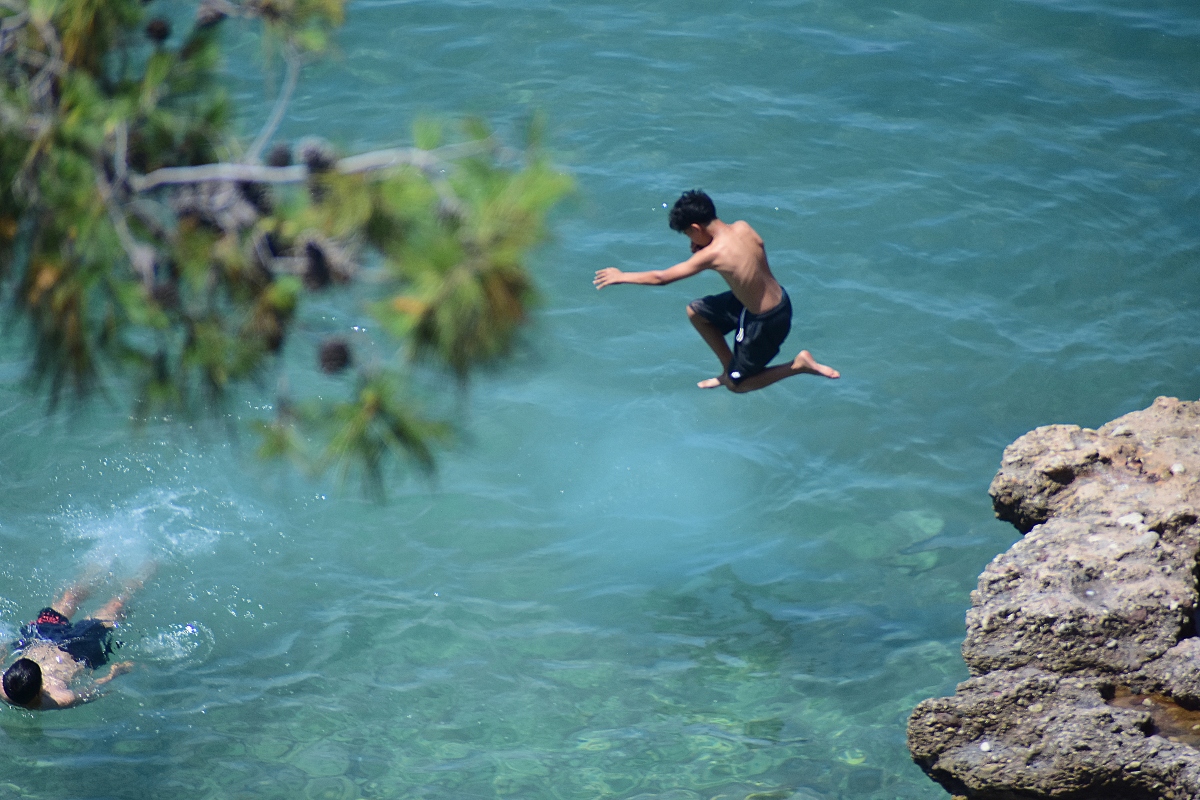In the coming days, temperatures will soar again, with a four-day heatwave approaching. Thermometers are expected to reach and exceed 40°C.Meteorologist Klearchos Marousakis explains how the weather will change and discusses the phenomenon of the “heat dome” in Greece.“A westerly/southwesterly airflow will act like a reservoir, channeling warm air toward the eastern part of the mainland.”
From Monday, June 7, to Thursday, June 10, temperatures in some areas will climb above 40°C. Wednesday and Thursday are expected to be the most challenging days, with temperatures potentially reaching 42–43°C.
Greece will experience a “heat dome,” a phenomenon well-known to experts. Meteorologist Klearchos Marousakis describes it as follows:
“A high-pressure system will cover much of Western and Central Europe, drawing very warm air masses from the North African coast into local regions. This phenomenon, often called a ‘heat dome,’ is illustrated in the diagram.
Imagine an atmospheric circulation shaped like a bell, where very hot air enters from the lower part, indicated by moving arrows, and becomes trapped inside the bell, unable to rise to higher levels of the troposphere. Scientifically, this occurs because, in a high-pressure system, atmospheric air moves downward (illustrated by stationary orange arrows).
As a result, very hot air accumulates in the lower layers of the troposphere. Cooler air, represented by blue arrows around the bell, is pushed out by low-pressure systems and cannot enter the bell (an atmospheric ‘mountain’).
Starting this weekend, this bell—or heat dome, or scientifically, a high-pressure system—will shift toward our country, bringing very warm air masses further east.”
With the prevalence of the summer Meltemi winds in the Aegean Sea, which heighten the risk of wildfires, “a heatwave will arrive on Monday, though with slightly less intensity,” says meteorologist Klearchos Marousakis.
A few days ago, we reported that Europe is struggling with intense heat. Compared to other European countries, Greece has so far experienced relatively tolerable conditions, and the upcoming hot days, though extreme, will be short-lived.
During the four-day period from Monday to Thursday next week, temperatures are expected to rise significantly, with a westerly/southwesterly airflow shielding the eastern mainland from winds. As a result, temperatures will range from 40°C to 42°C between Tuesday and Wednesday.
In an interview with MEGA, hydrometeorologist Theodoris Giannaros stated that starting Saturday, the country will gradually enter a period of high temperatures. On Monday and Tuesday, the heatwave will peak, with thermometers in Larissa, Sparta, and Corinth reaching 41°C.
From Saturday, strong winds will subside, but rising temperatures will intensify. Meanwhile, the risk of wildfires remains high. Geology professor Efthymios Lekkas emphasized the importance of clearing land as a life-saving measure:
“When uncleared plots of land are interspersed with residential areas, it creates an explosive mix. It’s no coincidence that cleared areas have a low fire risk, and any fires that do start are extinguished almost immediately.”
Heat Dome: A meteorological phenomenon likely linked to global warming, where a confined area of hot oceanic air forms an inverted cup shape, with stable weather conditions in the upper atmosphere. In meteorology, this is known as an Omega-block.
Greece Faces High Wildfire Risk in Five Regions on Friday
Authorities have issued a high wildfire risk alert (Category 4) for Friday, July 4, 2025, across five regions of Greece, prompting heightened civil protection measures.
The regions at risk include Attica (including Kythira), Euboea, parts of the Peloponnese (Corinthia, Argolida, Laconia), and the North Aegean (Chios, Samos, Ikaria), according to the Fire Risk Forecast Map issued by the General Secretariat of Civil Protection under the Ministry of Climate Crisis and Civil Protection.
The General Secretariat has notified relevant state agencies, regional authorities, and municipalities to remain on high alert to address potential wildfire outbreaks swiftly. The Fire Service has activated Stage 2 operational readiness, with aerial and ground patrols involving firefighting, police, and military forces. Fire Service personnel in the affected areas are on partial standby to manage increased operational demands.
Citizens are urged to exercise extreme caution and avoid activities that could accidentally spark fires, such as burning dry grass or branches, using spark-generating tools like chainsaws or welding equipment, operating outdoor grills, smoking beehives, or discarding lit cigarettes. Authorities have also reminded the public that burning fields is prohibited during the wildfire season.
A Civil Protection Action Plan for wildfires remains in effect, including preventive measures such as restricting vehicle traffic and visitor access to national parks, forests, and vulnerable areas. The Fire Service has issued a public appeal for vigilance, advising citizens to:
- Avoid negligence-related activities that could ignite fires.
- Stay informed about wildfire prevention through the Fire Service’s official website and social media accounts on Facebook and Twitter.
- Immediately report any fire sightings to the Fire Service at 199.
For their safety, citizens are requested to follow the instructions of relevant authorities in case of a fire. Additional information and self-protection guidelines for wildfire risks are available on the General Secretariat of Civil Protection’s website at www.civilprotection.gr.
